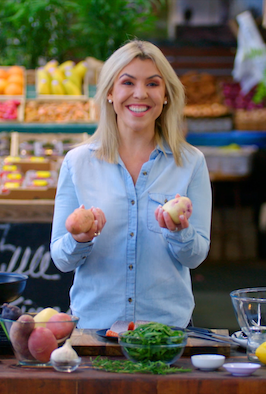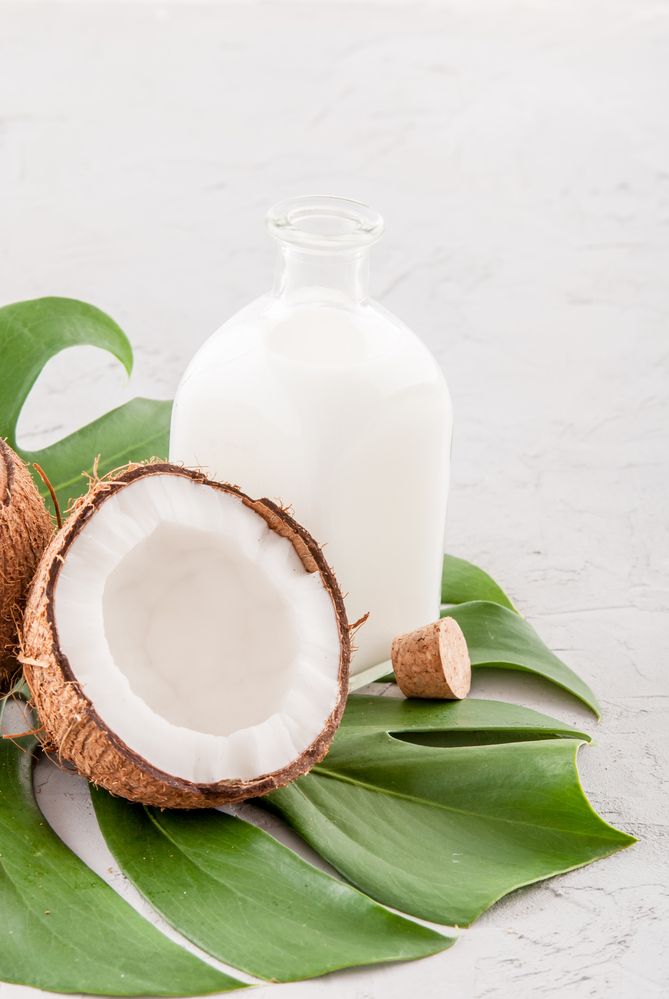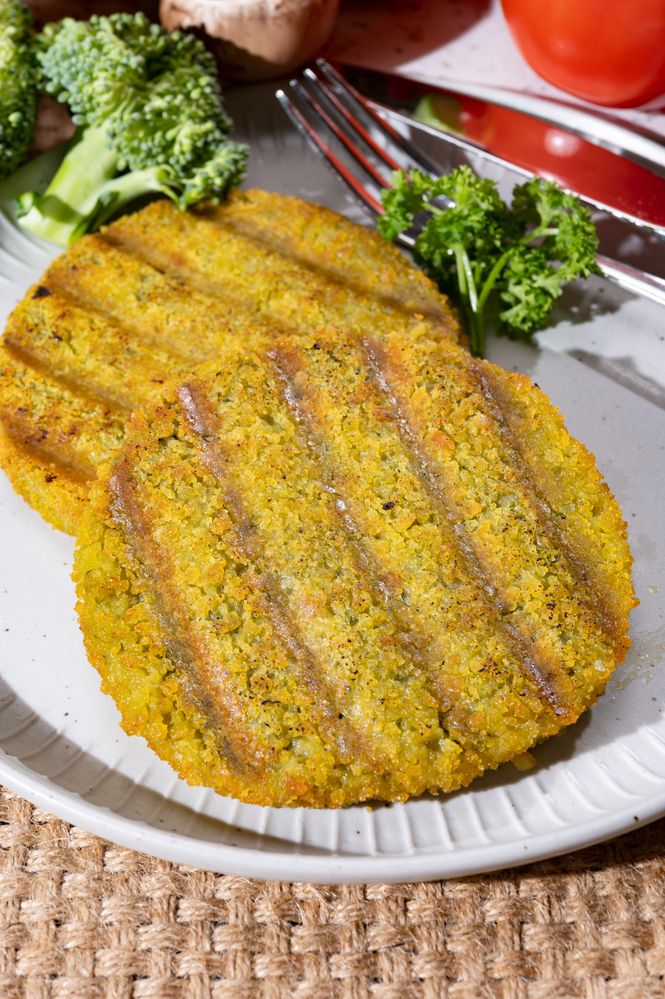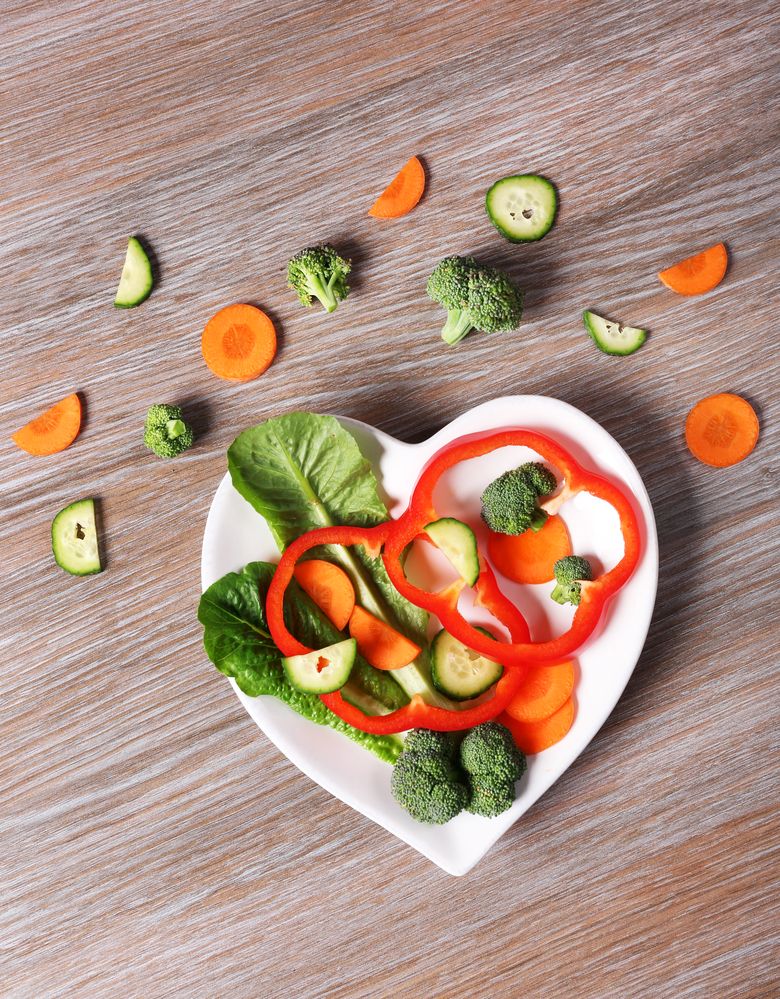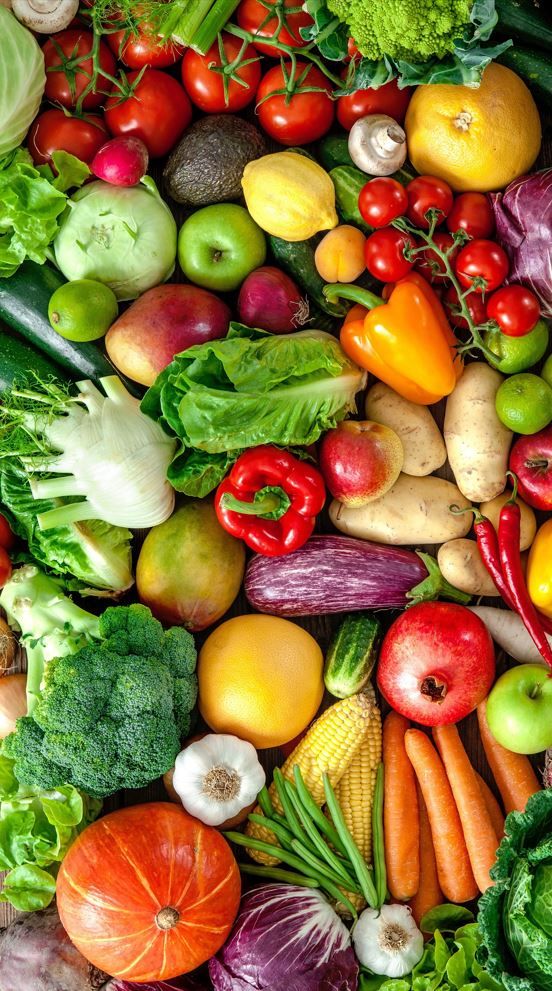Butter vs Margarine. Which is best?
Written by Catherine Saxelby
on Tuesday, 14 August 2012.
Tagged: butter, cholesterol, fat, guides, healthy eating, margarine, tips

Is margarine healthier than butter? Or vice versa? This choice has been hotly debated for years and has many taking sides. The answer is not simple and depends on your health profile and what you’re looking for from a spread. Here’s my take on this hot issue.
Butter - what is it?
It’s natural, being made from cream, water plus a little salt and has been around ever since humans started herding cows thousands of years ago. It adds a divine flavour to most things – I have friends who are health-conscious but won’t sauté a leek or a mushroom without a nob of butter.
At 80 per cent fat, with two-thirds of that saturated fat (53 per cent), it’s a spread to use sparingly. I love it but I restrict it to those times when nothing else will do – say on hot toast. Apart from that, I go for the many alternative things you can spread on bread, sandwiches and crackers – see here.
Margarine - what is it?
On the other hand, margarine has only been with us for over one hundred years. It was invented during the 1870s in France when the Emperor Napoleon III was looking for a substitute for butter for troops in the field on his many military campaigns.
These days, margarine is made from oils, usually canola, olive or sunflower, which are mixed with a solid vegetable fat base (which is what turns it into a semi-solid spread) along with water, skim milk, emulsifiers to keep everything blended, along with added vitamin A and D.
It offers a spread that is either predominantly poly-unsaturated (if made from sunflower oil) or mono-unsaturated (if made from canola or olive oil). Most margarines have less total fat than butter with some 70 per cent or less - you're eating more water and less oil. It contains around 20 per cent saturated fatty acids.
A comparison
Margarine and butter are both used to enliven our daily bread and they both contain the same amount of total fat – around 70 to 80 per cent - and kilojoule count, but there the similarity ends. They differ in the type of fatty acids (the component building blocks of fats) that they contain. One rounded teaspoon of either, which is roughly the amount that you get from a single serve portion pack in restaurants, gives you 7 grams of fat and 262 kilojoules or 62 calories.
The weigh up
If you and your family are in good health and your overall diet is healthy (not a lot of take-aways or fatty snacks) and you want as natural a diet as possible, then butter is fine in moderation.
A blended butter-oil product is a halfway option and gives a good compromise between butter’s taste, spreadability with less saturated fat. Read their pros and cons in my assessment.
Margarine good for your heart
If you have high cholesterol or a family history of heart disease, then margarine is a wiser choice for two reasons:
1. Margarine looks after your heart better
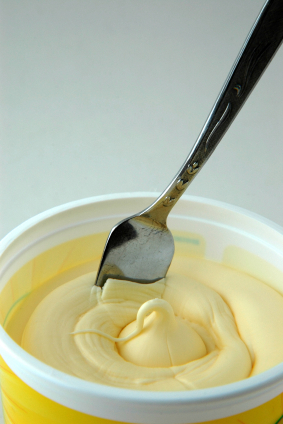 At 20 per cent saturated fat, margarine has less ‘bad’ saturated fat and more heart-healthy unsaturates than butter. It has no cholesterol. It’s the spread of choice for the Heart Foundation in all their recommendations. Up until the 1990s, margarines had a lot more trans fat due to the hydrogenation process that turns liquid oils in a semi-solid spread. This created synthetic trans fatty acids that raise LDL- and lower HDL-cholestero, both considered bad for heart disease risk.
At 20 per cent saturated fat, margarine has less ‘bad’ saturated fat and more heart-healthy unsaturates than butter. It has no cholesterol. It’s the spread of choice for the Heart Foundation in all their recommendations. Up until the 1990s, margarines had a lot more trans fat due to the hydrogenation process that turns liquid oils in a semi-solid spread. This created synthetic trans fatty acids that raise LDL- and lower HDL-cholestero, both considered bad for heart disease risk.
These days, virtually all the margarines/spreads in Australia are free of trans fats (less than 1per cent), thanks to the Heart Foundation Tick program as well as responsible manufacturers. This situation is different from that in the USA and UK. So take care when reading articles from overseas as they don’t apply here in Australia.
The only exceptions are a few of the cheaper or generic margarines which you would recognise as hard (stick) margarines with the spreadability of butter. Avoid these ones and go for the softer types and you’ll be fairly sure of not buying trans fats.
For comparison, butter has 53 per cent saturated fat, 230mg cholesterol per 100g and no synthetic trans-fat but it does have a small amount of natural trans fats (4-5%) which are created by all ruminant animals (such as cows, sheep and goats).
TRANS FATS:
In the past, liquid oils were hydrogenated to create margarine but this also created unhealthy trans fats. Trans fats are formed when liquid vegetable oils are hardened or hydrogenated (treated with hydrogen) to turn them into semi-solid fats. Hydrogenation changes a fatty acid's molecular structure and turns a portion of it into the trans form. If in doubt, you can check how much trans fat there is using the Nutrition Panel on the bottom of the tub – it should list trans fat as less than 0.1g per 100g or <0.1%.
These days margarine is made solid by a process called inter-esterification which doesn’t result in trans fat but which is also not natural and may turn out to be just as undesirable.
2. Margarine can be used sparingly
Margarine is soft and spreadable straight from the fridge, something that’s hard to do with butter. You use less which is good for your waistline and ultimately your heart. In fact, a US study of 46 families reported that swapping from butter to margarine successfully lowered blood cholesterol levels, but this effect depended on overall body weight.
If you need to lose weight, margarine is better because it spreads more thinly, so saving you kilojoules. And it’s only 70 per cent fat (with some even lower at 60 per cent and 50 per cent as light spreads) compared to butter at 80 per cent. Softer margarines have more unsaturated fats than harder margarines
For cholesterol lowering, the best choice is a margarine with added sterols (eg Logicol, Pro-activ) that block cholesterol absorption.
Ingredient comparison
Yes butter’s more natural with only three ingredients compared to margarine’s 12 or so.
Butter (3 ingredients)
Cream, water, salt.
Regular margarine eg Meadow Lea (12 ingredients)
Vegetable oils 65% (containing 52% canola & sunflower oil), water, salt, emulsifiers (soy lecithin, 471), preservative 202, food acid (lactic), milk solids, maltodextrin, natural colour (beta-carotene), vitamins A & D, flavour.
What the additives are used for:
- The two emulsifiers keep everything blended and stop separation - soy lecithin is widely regarded as safe, 471 is mono-and di-glycerides of fatty acids, one of the additives. I don’t think you need to worry about
- 202 is potassium sorbate needed to stop the oils going rancid or moulds growing in the oil-water mix
- Lactic acid is a food acid (you find it in yoghurt) that adds a pleasant tang
- Maltodextrin is a modified starch that keeps things mixed together and thickens slightly
- Beta-carotene adds a pleasant yellow-orange colour. It’s a precursor to vitamin A and is found in carrots, pumpkin and other orange produce. It makes margarine look more like butter – better than the days when it was white.
- No-one really knows what’s in flavours but I suspect it would be to add a buttery flavour.
How butter stacks up against margarine
| Product |
Fat % |
Sat fat % |
Sodium mg |
|---|---|---|---|
| Butter | |||
| Butter, regular eg Devondale | 81 | 53 | 776 |
| Butter, light eg Devondale Light | 40 | 19 | 380 |
| Spreadable butter eg Western Star Original | 70 | 31 | 480 |
| Speadable light butter eg Western Star Light | 40 | 19 | 511 |
| Margarine/spread | |||
| Canola regular eg Gold'n Canola | 65 | 16 | 350 |
| Canola light eg Gold'n Canola Light | 46 | 11 | 330 |
| Meadow Lea regular | 70 | 18 | 790 |
| Meadow Lea salt-reduced | 70 | 19 | 380 |
| Meadow Lea light | 49 | 12 | 340 |
Bottom line:
Your choice
- You have to make the choice between naturalness and flavour OR less saturated fat and spreadability. Whichever you go for, look for a spread that’s salt-free or salt-reduced (with 1% salt) and use it sparingly. We don’t need heaps of either butter or margarine.
- Use oils where you can, say for cooking or dipping, as they are closer to nature, have no trans fats and are rich in the beneficial unsaturated fats. I like to use olive oil for salads and general cooking and peanut oil for stir-frying.
My choice
I go for a butter-oil blend that I can spread straight out of the fridge and tastes like butter but I keep it mainly for toast. I like to use these 7 other alternatives on my bread.
Forget light butters or margarines which have a higher water content and make your toast soggy and spit if you use them in cooking.
Note: Most margarines today must be called ‘spreads’ as they contain only 60 or 70 per cent fat. Technically only a product with 80 per cent fat can be called margarine - so it is an exact match for butter. Here we’ve used the term margarine to cover all the non-butter spreads at the supermarket for ease of understanding.
Reviews
-
Read more
Product review: Low-sugar alcoholic ginger beer
1 March 2023 by, Catherine Saxelby
Want something to drink before dinner? Something that’s LOWER in alcohol than wine? To match his beer? Then look no further than Bundaberg’s low-sugar alcoholic ginger beer.
You can drink Bundaberg low-sugar ginger beer straight from the can, or pour it into a long glass over ice with a slice of lime.
-
Product snapshot: Berkelo’s Khorasan Macaroni
14 September 2022 by, Catherine Saxelby
I’m loving this macaroni from Berkelo. I was sent a sample for Whole Grain Week 2022 by the Grains Legume Nutrition Council. I cooked it up and found that it was just divine! Read on for more …
-
Product review: Super high-oleic safflower oil
11 May 2022 by, Catherine Saxelby
“What does super high-oleic mean?” I hear you ask. Also, “I haven’t heard of safflower for ages. What’s the deal?” Read on and all will be explained.
-
Product review: Healthy Life Food Tracker
6 April 2022 by, Catherine Saxelby
When I was first asked to write this review, I thought, Not another tracker.
After all, there have been several in recent years, such as My Fitness Pal and Everyday Diet Diary. But this one is different. It works by using your Everyday Rewards card AND your shop at Woolworths.
-
20 October 2021 by, Catherine Saxelby
With home delivery on the rise, this post is reviewing none other than that stalwart Lite n’ Easy. We all know their meals are good for weight loss (which we all need after COVID-19!), but did you know they’re also good for general health and wellbeing ? Eating well to nourish yourself – putting your mental health and wellbeing at the forefront – is gaining momentum. Lite n’ Easy meals also ensures you satisfy your need for vitamins, minerals, fibre and phyto-compounds, such as sterols and carotenoids.
 This post has been sponsored by Lite n' Easy.
This post has been sponsored by Lite n' Easy. -
Product review: Birds Eye Plant Based range
15 September 2021 by, Catherine Saxelby
When you think of Birds Eye, their frozen peas and fish fingers probably come to mind. But I bet you’d never think of plant-based products!
 This post has been sponsored by Birds Eye.
This post has been sponsored by Birds Eye. -
Product Snapshot: Olina’s Snackers Crackers
2 June 2021 by, Catherine Saxelby
We sampled Olina’s latest offering in the seeded cracker range – called Olina’s Bakehouse Seriously Seedy Snackers (which is a great name BTW). They come in four flavours: Barbecue, Chilli & Lime, Beetroot & Sour Cream, and Balsamic Vinegar & Caramelised Onion. Take a look at our verdict.
Healthy Weight Loss
-
Read more
Intermittent fasting vs daily calorie restriction
3 May 2023 by, Catherine Saxelby
As you probably know already, intermittent fasting (IF) has gained favour as an alternative regimen to daily caloric restriction (DCR). Fasting is shown to extend the lifespan of rats, and has been associated with metabolic benefits in humans, yet the results so far have been inconsistent. So, which regimen is best for healthy weight loss?
-
15 March 2023 by, Catherine Saxelby
What sort of a diet should you follow to lose that excess weight? These days, it’s pretty confusing with high-protein Keto advocates clashing with plant-protein followers … as well as intermittent fasters, juice-only dieters, no-carb dieters and no-animal (aka plant-based) dieters. Plus all the ads for anti-hunger supplements, meal-replacement shakes and home-delivered meals, more of which somehow appear every day. So, what sort of diet should YOU follow to lose that excess?
-
Protein shakes for weight loss
9 November 2022 by, Catherine Saxelby
These days, protein shakes aren’t bought by just body builders – they’re so popular that you can readily buy a 400 g tub at your local supermarket or service station. And with tempting claims such as ‘Facilitates muscle toning’, ‘Contains transformation-making protein’ and ‘Tastes incredible, mixes easily’, why wouldn’t you grab one? But protein shakes aren’t the magic answer to all your weight-loss woes. Let’s take a look at what you get for your money.
Guest post by dietitian Zoe Wilson APD
-
20 January 2021 by, Catherine Saxelby
Many of us have cravings from time to time and for different reasons. One thing is certain, they can sabotage all your best efforts at a healthy diet and/or weight loss. The good news? You CAN beat them. I’ll tell you how.
-
How to lose weight WITHOUT going on a diet
14 October 2020 by, Catherine Saxelby
The word 'diet' is a turn-off for most people. It sounds hard, unpleasant and unpalatable. Losing weight doesn’t have to be hard AND it doesn’t have mean sticking to a 'diet'. You can forget Paleo, Keto, Vegan and Raw, Gluten-free and Intermittent Fasting. To lose weight, you don’t have to follow any specific diet. What you need is simple, healthy, nutritious food and a few tips and tricks.
-
What IS a healthy balanced diet for weight loss?
16 September 2020 by, Catherine Saxelby
Healthy weight loss happens when you lose weight slowly and steadily (around 1 kg or 2 pounds weight loss a week). Your goal is to lose weight while still getting your essential nutrients but from smaller portions. You certainly don’t want to be tired with no energy! That’s why you need regular healthy meals and snacks on hand to ensure your vitamins, minerals, omega-3s and fibre needs can be easily met. There is a new range of healthy weight loss meals available and it’s one that I’d like to recommend. With these ready meals, you’ll say goodbye to meal planning, shopping, meal preparation and cooking.
This post is sponsored by Chefgood
-
Kitchen make-over for the New Year
8 January 2020 by, Catherine Saxelby
“This year, I'm going to lose weight!”, or “This year I’m opting for a healthier lifestyle!” Is your 2020 New Year's resolution something like one of these? If so, how is it going to happen?
Most popular
-
Read more
Q. What's the difference between Diet Coke and Coke Zero?
12 September 2013 by, Catherine Saxelby
A. At first glance, Diet Coke and Coke Zero appear to be identical. Both contain no kilojoules (Calories) and no sugar. Both are artificially sweetened with (the same amount) of aspartame and acesulfame K and therefore have the same ‘sweetness’.
-
How to convert sodium to salt (and salt to sodium)
6 August 2010 by, Catherine Saxelby
As a nutritionist, my aim is to help busy women eat healthily. One of the ways to do this is to follow the general nutrition advice to reduce the salt in your diet. So, how can you do this when what you’ll see on a food label and on any recommended daily intakes is sodium?
-
7 types of sugar - which is healthier?
11 December 2013 by, Catherine Saxelby
Last week on the radio, the announcer asked me if there was a 'good' sugar – one that would satisfy her sweet tooth but that was 'healthier' than regular white sugar. She figured if there were 'good' carbs and 'bad' carbs there must be some sugars that would get the nod of approval from nutritionists.
-
Eat to beat gastro and diarrhoea
12 October 2012 by, Catherine Saxelby
A clear fluid diet is the best form of treatment for gastro and tummy upsets. It is the "lightest" type of diet, designed to place as little strain as possible on the digestive tract. It is NOT nutritionally adequate and should be followed only for a strictly limited time e.g. two or three days but no more than a week.
-
Nutella. The full (correct) list of ingredients
12 April 2011 by, Catherine Saxelby
Have you ever tried to find the exact list of ingredients for Nutella online? The identical one that appears on its label - in descending order from the first (largest ingredient by weight) to the last ingredient, as required by law? Well, you won’t find it! Here’s the hoop-la I went through to discover exactly what the ingredients in Nutella are and why Nutella is not good for your kids.
-
Sugar - why quitting sugar guarantees you'll lose weight
6 May 2013 by, Catherine Saxelby
Sugar. It's been labelled "deadly", "addictive", "toxic", "sweet poison" and blamed for the rise in global obesity in recent years." Get rid of the white toxin from your diet and you'll free up your body to drop those excess kilos" (or so say anti-sugar campaigners Sarah Wilson, David Gillespie and Robert Lustig). Here are the three real reasons why I believe quitting sugar helps you lose weight.
-
What does 8,700 kilojoules look like?
14 August 2012 by, Catherine Saxelby
8,700 is a magic number in nutrition. It’s the number of kilojoules (kJ) that is the “average” intake for adults in Australia, if the surveys are correct.
It’s widely used as a benchmark figure and as the basis of food labels such as the Percent Daily Intake values.
Recently kilojoules have appeared on fast food menu boards and they use 8,700 as the yardstick to assess their foods against. Here's my take on it.
Recipes
-
Read more
24 May 2023 by, Catherine Saxelby
This is a kind of pavlova topped with fruit, but the base is made from ricotta, rather than egg whites and sugar.
-
22 March 2023 by, Catherine Saxelby
This is an Asian-influenced salad that’s perfect to serve as a side salad at a BBQ or with a fillet of fish.
-
14 December 2022 by, Guest Post
This banana loaf is half bread and half cake. Hence I've called it "cread" which is halfway! It’s dense and delicious without being super-sweet or oily. It can be enjoyed fresh, toasted or sliced and frozen into portions to enjoy later.
-
23 November 2022 by, Guest Post
This quick and easy dessert is ready in minutes. And there are NO leftovers to tempt you later!
-
19 October 2022 by, Catherine Saxelby
A quick and easily-made sandwich, it’s great for an easy lunch.
-
Spring Vegetable Pesto Pasta Salad
7 September 2022 by, Guest post
This super salad-in-one gives you pasta plus vegetables all together. It has a spring feel to it.
-
Squash-ed spaghetti bolognaise
3 August 2022 by, Guest post
This is an excellent make-and-freeze recipe, so weeknight meals become more manageable. I know of no better way of ‘hiding’ veggies than in a Bol sauce – somehow mince with a few veggies like pumpkin or zucchini is a match-made-in-heaven.
Foodwatch
The Good Stuff
The Boring Stuff
© 2025 Foodwatch Australia. All rights reserved
Website by Joomstore eCommerce
